


Podari
gamer level 6
8604 xp
8604 xp
followers
13
13
Use my invite URL to register (this will give me kudos)
https://boardgaming.com/register/?invited_by=podari
profile badges




recent achievements

The Gold Heart
Give 10 Gold Hearts to games that you love.
Give 10 Gold Hearts to games that you love.

I'm a Gamin' Fiend!
Claim that you have played a game today by clicking the "Played Today!" button on a game page 200 times.
Claim that you have played a game today by clicking the "Played Today!" button on a game page 200 times.

Vanguard
Give 250 hearts (loyalty points) to a single game
Give 250 hearts (loyalty points) to a single game

Gamer - Level 6
Earn Gamer XP to level up!
Earn Gamer XP to level up!
Player Stats
Critic (lvl 1)
170 xp
170 xp
Explorer (lvl 3)
1034 xp
1034 xp
Professor (lvl 2)
623 xp
623 xp
Reporter (lvl 1)
263 xp
263 xp
About Me
Gaming has slowly creeped up on me. In my younger years, I played a fair amount of American games; epic Risk or Monopoly sessions and never ending bouts of traditional card games were common fair, but never really entirely fawned over. I do have fond memories of Balderdash and Taboo and the like, but my days of suffering through the likes of Monopoly are over.
The change began senior year of college, when I started hanging out with some people who had a weekly boardgame night. I was introduced to a very eclectic mix of games, from the terrible, propagandistic "Public Assistance," to casual fair like "Guillotine," to more strategic games like "Settlers of Catan."
Since then, my gaming horizons have been expanding and I find myself ever more consuming boardgames and seeking them out. I play a couple rounds of a boardgame whenever my roommate and I are home at the same time. Currently, it's Ascension, that we've borrowed from a friend. Before that, it was Race to the Galaxy. We're always on the look out for two-player games to play.
That's just the surface of my boardgame obsession, however, as I'm known to host boardgame centric parties (current dilemma; not enough scalable games for if I have between 5-10 people) or just casual get togethers. I'm particularly fond of games with strategic elements and ones where there is little wheeling and dealing between players (something that always frustrated me about Risk and Monopoly growing up), but I keep an open mind and enjoy most games that I play.



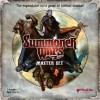


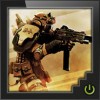
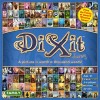

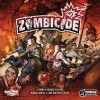











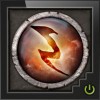






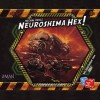

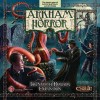

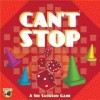





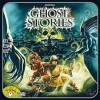
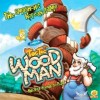
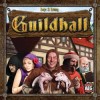
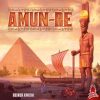


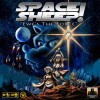
Neuroshima Hex!
…players take turns placing hexagonal tiles covered with abstract symbols on a hexagonal grid, which, through the arcane mechanisms of their symbology, impact other tiles. And it’s FUN?!
So what’s this game about?
Neuroshima Hex is a tactics game, where the objective is to deal more damage to enemy HQs than they can deal to yours. Each of the 2-4 players controls a different army, with it’s own thematic strengths and weaknesses.
The Theme
The armies are based on factions in the post-apocalyptic world of Neuroshima, a Polish RPG with a rich history that translates to the board-game in the art on the tiles, a few little blurbs about the armies and… that’s about it.
While the armies’ strategies do match the description of the factions and I’m sure the feeling of an all out battle would have been undermined if the armies were based off of My Little Pony instead, the theme is fairly negligible. I read the blurbs, but until I started writing tips for the game I only called the armies by their color; I had no reason to contextualize that Green against Red was really the newest offensive of the last standing human army (the Outpost) against the mechanical Moloch overlords.
The Pieces
There are four armies in the game: the Moloch (red), the Outpost (green), the Hegemony (yellow), and Borgo (blue). Each army has 35 hexagonal tiles, including an HQ that confers a unique bonus to adjacent troops; a variety of units, which can attack or hinder the opponent; a few modules, which generally support adjacent troops, but may also hinder adjacent enemies; and a number of action tiles, which are played for an immediate effect (e.g. move an already placed tile). The game board is a regular hexagonal grid of side three (19 spaces total).
The Symbols
Each tile has symbols which define their function. A unit may have either short or long triangles along any of its edges indicating that they have a melee or a ranged attack, respectively, in a particular direction. If a unit can attack, it also has an initiative, which determines the phase during which it attacks. Units may also have directional armor, which reduces damage from ranged attacks; a directional net, which completely disables an adjacent tile; or the ability to move.
Modules can have symbols indicating that they boost the initiative of certain adjacent tiles, boost the ranged strength of all adjacent units or take damage in place of an adjacent unit, to name but a few things. Action tiles are just a single large symbol signifying that they either start a battle, move already placed units, or cause direct damage to specific enemies.
All these symbols can be a little overwhelming at first and you’ll find yourself reading and re-reading the cheat-sheet for each army the first time or two that you play. Once you get a handle on them, however, they are super effective at making it easy to see exactly what a tile can do, which lets you focus on your strategic placement while keeping tabs on everybody else.
The Play
Players take turns placing first their HQs and then their other tiles anywhere on the grid, oriented as they see fit. The typical turn begins with a player randomly drawing three of their tiles, discarding one tile and either placing/using their remaining tiles or holding them for the next turn. Some units have the ability to be moved and/or reoriented on the player’s turn. Aside from action tiles, which may cause direct damage to a unit, there is no interaction between the armies until it is time to do BATTLE!
The Battle!
Battles occur either immediately when the last space on the board being filled or when a player plays a Battle tile (either way, it ends the player’s turn). The battle is conducted by initiative phase, starting with all the tiles with the highest initiative (the highest printed initiative is 3, but with modules and the Borgo HQ, you could get an initiative as high as 6). In each phase, every tiles’ attacks happen simultaneously, so all damage is applied before units are removed (if killed) and the next phase is started.
This initiative system is the meat of the strategy in this game, as a unit with initiative 1 may be able to deal three damage to the enemy HQ, but it has to survive all the preceding initiative phases first, so positioning other troops or support modules to insure that this will be the case is important. Similarly, there might be an enemy positioned to block your ranged attack on an HQ, but if you can place something to kill that unit in a higher initiative phase, you’ll have a clear shot.
The End
The game ends when either there is only one surviving HQ or any player runs out of tiles. The person whose HQ has the most health left is the victor.
The Fun
What makes the game so much fun is that it plays fast and the tides of war are constantly in flux as players jockey for position. There’s a real tension when you’ve lined up the perfect assault and you’re not sure if you can launch it before your opponent can mount an adequate defense. On the flipside, it’s super satisfying when your enemy lines up such an attack and you move your HQ at the last minute or you net a couple of their crucial tiles, completing undermining their planned offensive.
Even when this happens to you, it can’t be too disheartening when you know you’ll be starting a new game in 20 minutes anyway and maybe then you’ll be in a position to exact your revenge!